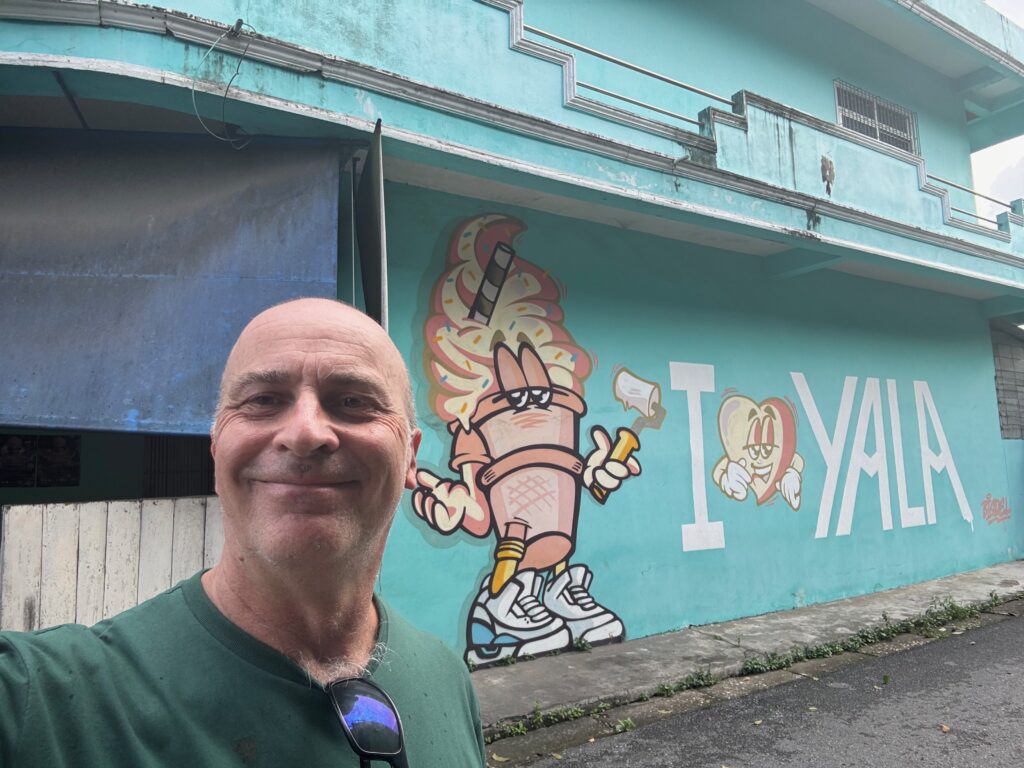
Thailand is renowned for its well-organised tourism industry, offering diverse options from backpacker hostels to luxury resorts.
The country attracts visitors with its rich culture, friendly locals, stunning beaches, lush forests, and numerous adventure activities. In 2024, Thailand welcomed approximately 36 million foreign tourists. However, most visit a select few of the country’s 77 provinces. Four provinces get the lion’s share of overseas guests: Bangkok, Phuket, Chonburi (Pattaya), and Chiang Mai.
I have been to 45 of the 77 now and can attest that many receive very few overseas tourists and feel much more isolated. For example, Nan, one of my favourite provinces, gets the same number of tourists yearly that Phuket welcomes every three weeks. And over 90% of the tourists visiting Nan are from Thailand!
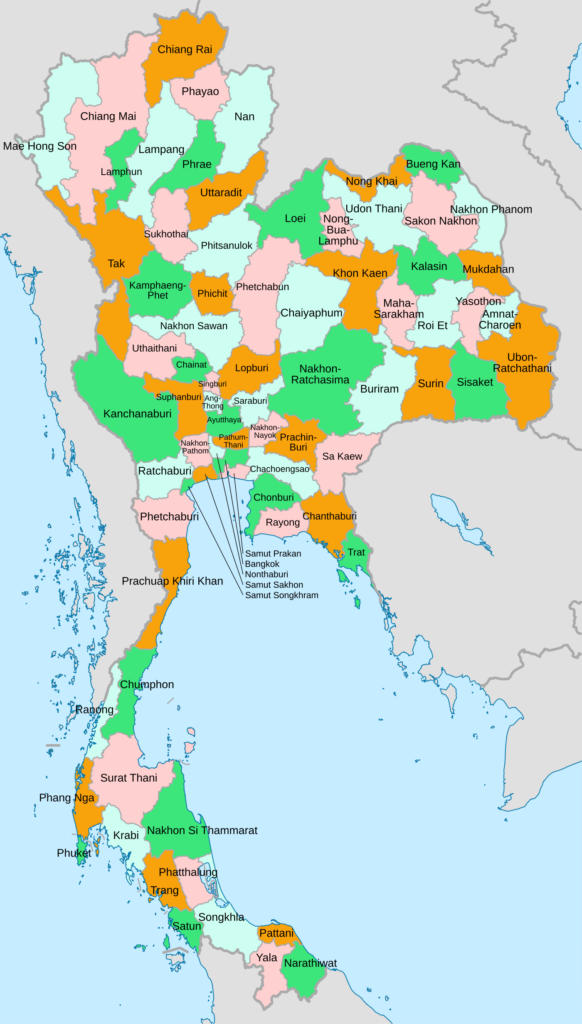
Now, I have found an even more isolated place in Thailand. As part of my rail adventure traversing all the rail lines in Thailand and Malaysia, I passed through Thailand’s three most troubled provinces in Thailand’s Deep South. There are no tourists here due to ongoing security concerns, Thai and foreign government travel advisories, and many insurance companies refused to provide coverage. I stopped en route to explore the city of Yala, the southernmost provincial capital in Thailand. The experience was unlike any other part of Thailand I have encountered, offering a unique perspective on a region seldom seen by outsiders.
Historical Context:
Before 1909, Yala was small town that was part of the Patani Sultanate, a Malay-Muslim kingdom that historically paid tribute to Siam but remained largely autonomous. In 1826, Rama III and British officials signed the Burney Treaty to ensure Siam’s independence. The treaty affirmed British assent that Patani was a Thai province. Siam exerted greater control over the region, breaking Patani into smaller administrative units, including Yala.
The 1909 Anglo-Siamese Treaty formally incorporated Yala, Pattani, Narathiwat, and Satun into Siam (modern Thailand), ending its historical ties to the Malay Peninsula. In return, Thailand gave up any claim on Malay territories that Britain wanted.
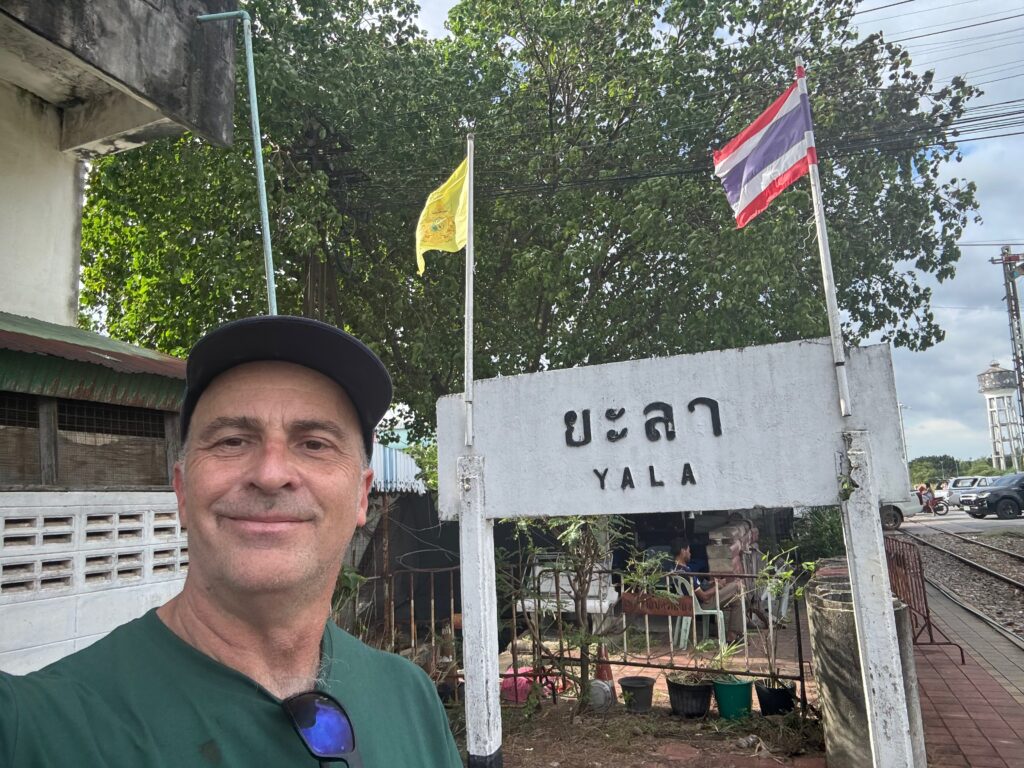
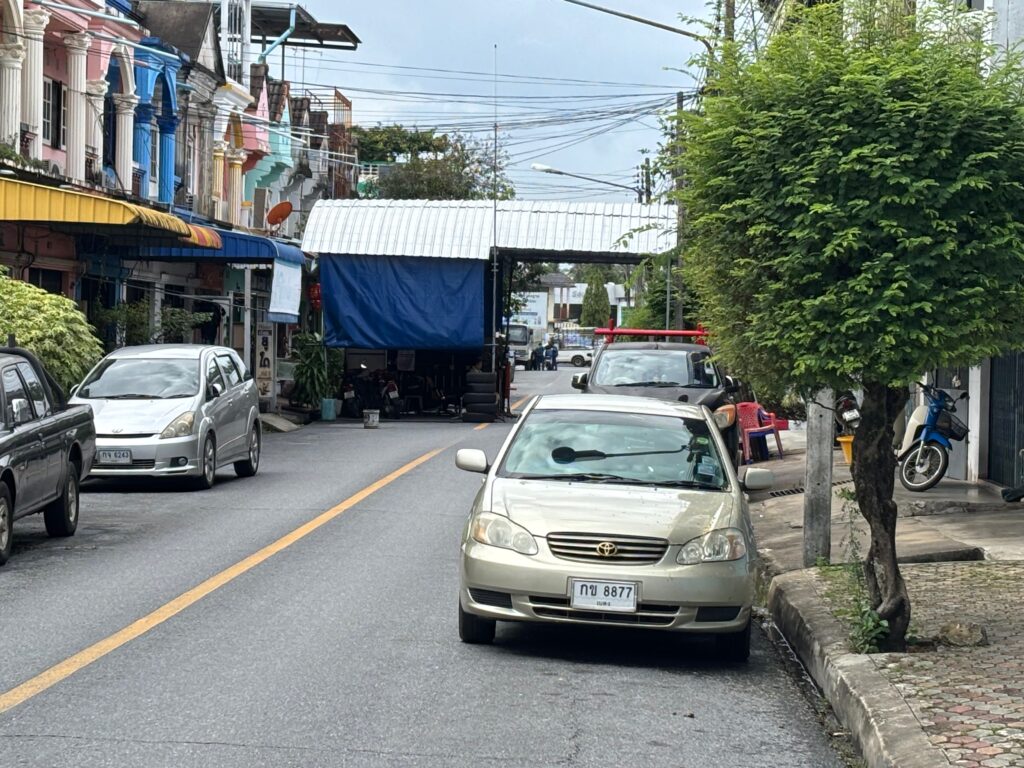
Thailand appointed a civil service and police force in Pattani that was predominantly Thai-speaking Buddhists from the north at that time. This annexation created lasting tensions, as many Malay-Muslims in the region continued to identify culturally and linguistically with Malaysia rather than Thailand. The city’s modern development began in 1910 under the rule of Yala’s first Thai governor, Phra Rattakit Wijarn.
Rating & Ranking
- Overall Score: 72%
- Rank in the World: 187 out of 300 cities visited
- Population: ~70,000
- Languages: Thai, Malay, Chinese, some Arabic (on signs
- Religion: Predominantly Muslim and Buddhist
- Notable for: City planning, street markets, multicultural heritage, and high security presence
- Would I come back? Yes
Getting There
The closest major airport is Hat Yai International Airport (HDY) which has flights from Bangkok and Phuket plus Malaysia. From Hat Yai, you can take a train, bus, or private car to Yala. Yala is on the Southern Line of Thailand’s railway network and tains run from Bangkok to Hat Yai to Yala and on tr Sungai Kolok. I arrived by train from Sungai Kolok, a fascinating ride through rural Thailand’s Deep South.
Yala is connected to Hat Yai, Betong, Pattani, and Narathiwat by road. Driving is possible, but there are numerous security checkpoints. Frequent buses and minivans run from Bangkok, Hat Yai, Sungai Kolok, and other nearby cities. Vans and buses to Narathiwat and Pattani also pass through Yala.
Yala’s Plan
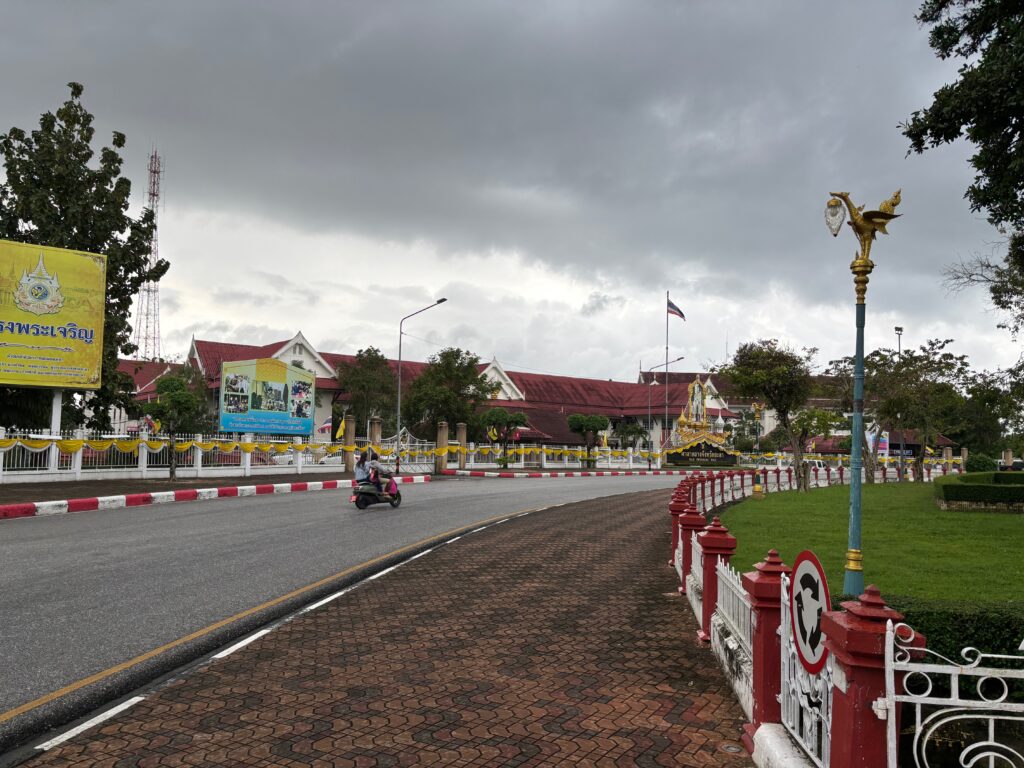
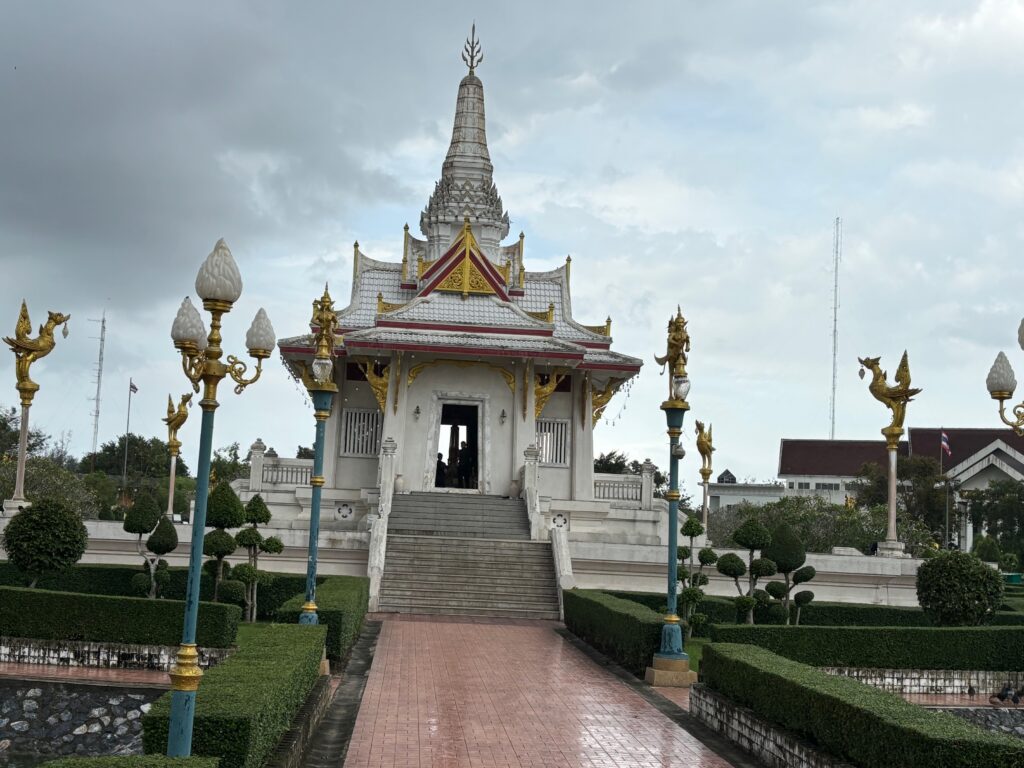
Unlike most Thai cities, Yala has a planned component. In the 1910s, during the administration of Phra Rattakit Wijarn, the city was designed around a circular core. The idea was to make the city more organised, accessible, and visually harmonious. I felt an odd familiarity with the design as it resembled Canberra, Australia’s planned capital.
The roads radiate outward from a central point known as “Kilometre Zero.” This layout resembles a spider web, with concentric circles and intersecting streets creating a planned symmetry rarely seen in Thailand. The innermost street is called Wongwian 1 (Roundabout 1). Then Wongwian 2 comes next and Wongwian 3!
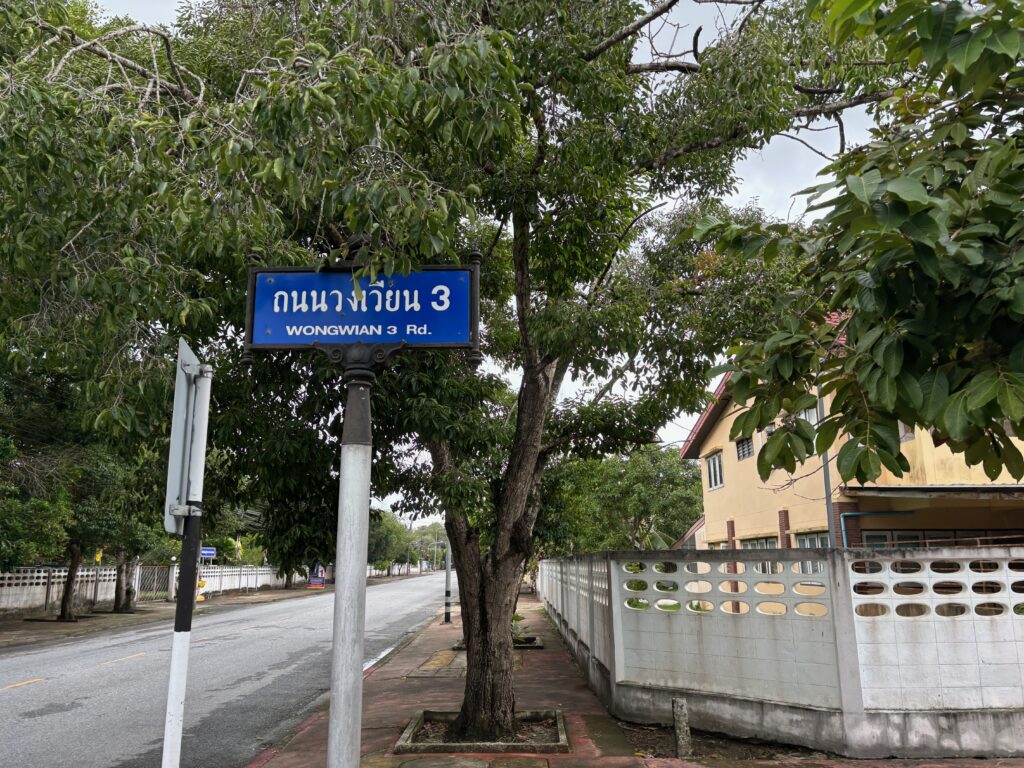
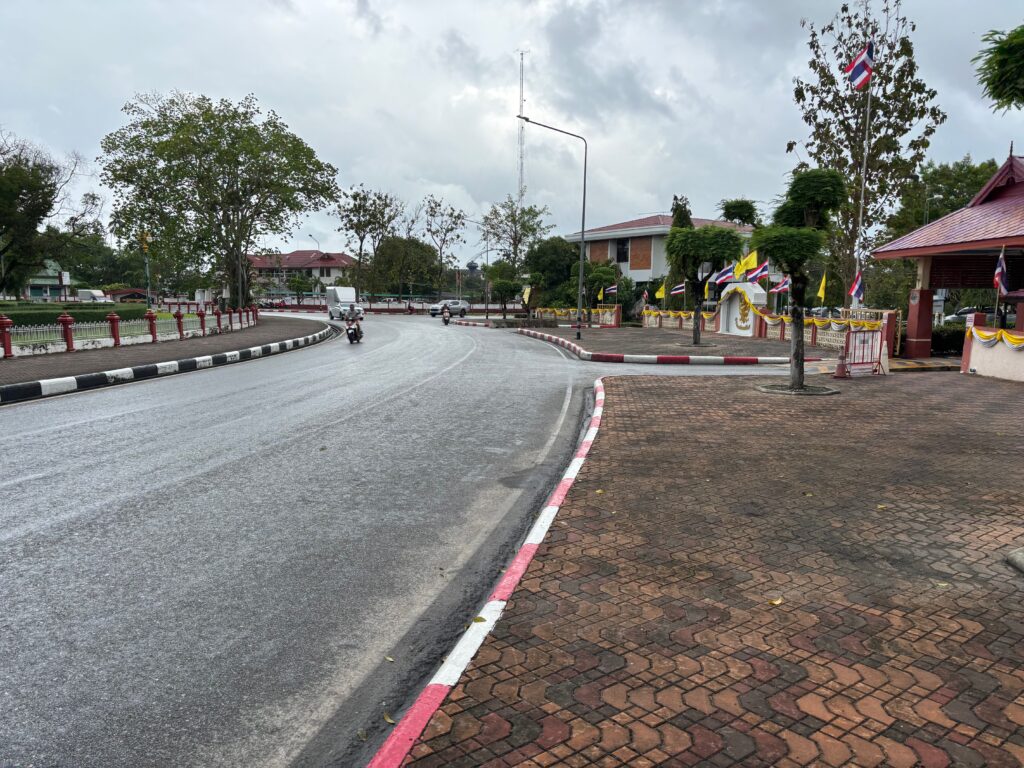
Covering just 19 square kilometres, the city’s 400 streets crisscross each other like a spider’s web. Zoning separates educational institutions, government offices, commercial districts, residential areas, and green spaces. Yala stands out for its wide, tree-lined boulevards. The areas around the core have expanded more chaotically, blending structured design with organic urban growth.
In 2020, Yala was ranked among the top 100 planned cities worldwide, a remarkable achievement for a relatively small provincial capital. Today, some of the strict zoning has broken down, which, I think, is a good thing.
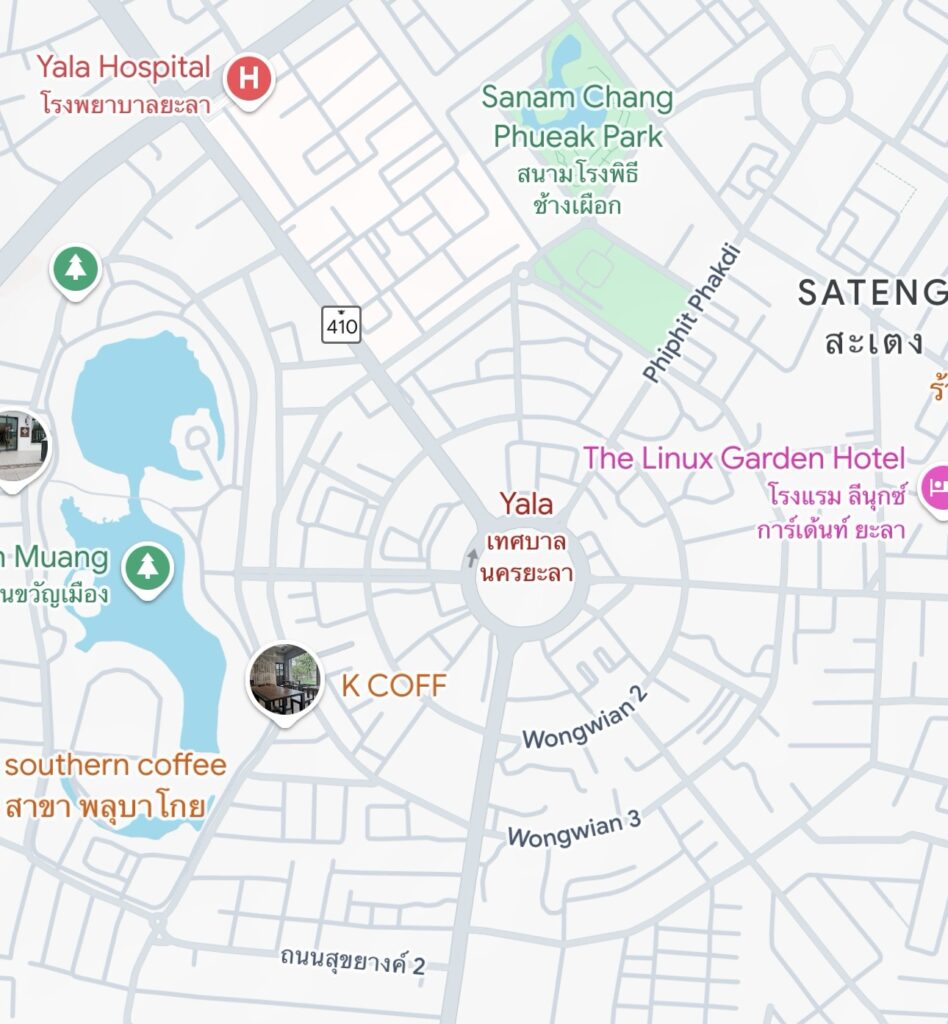
The architecture seems to mix 1930s, 1960s, and new 2020 buildings.
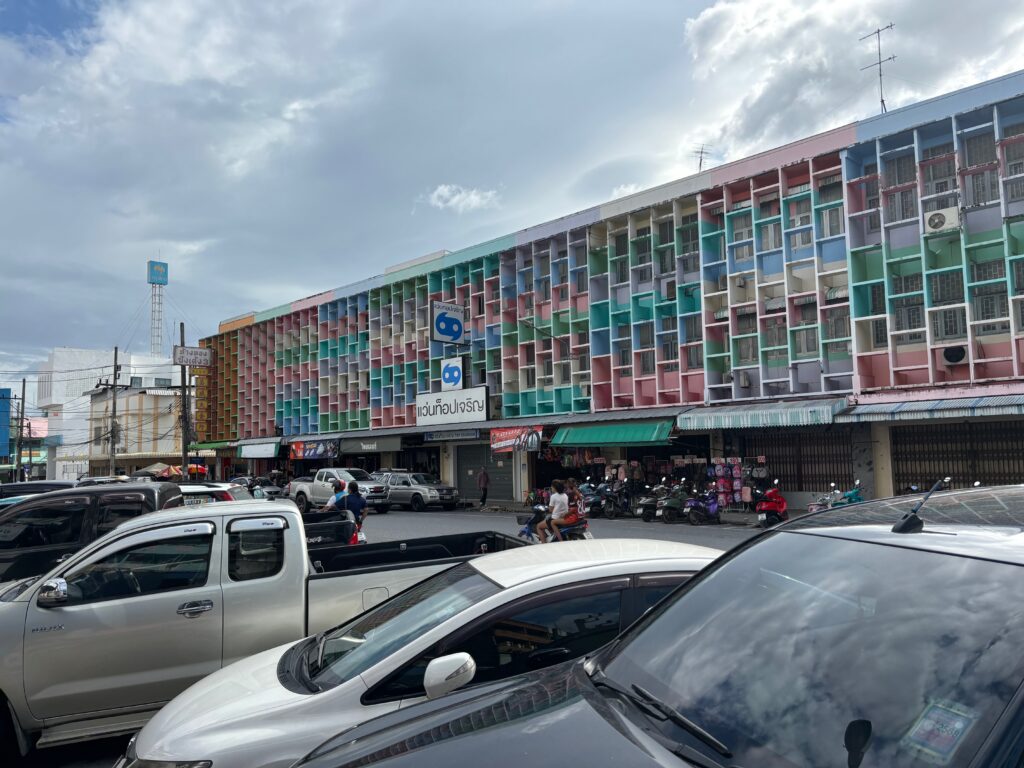
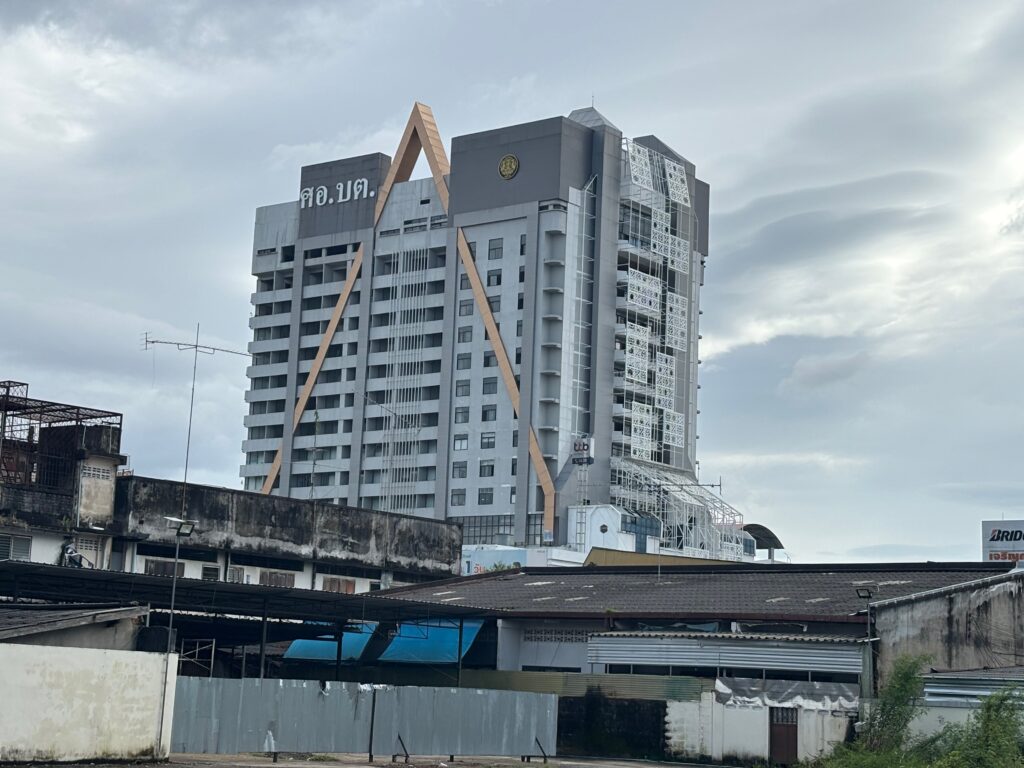
Getting Around
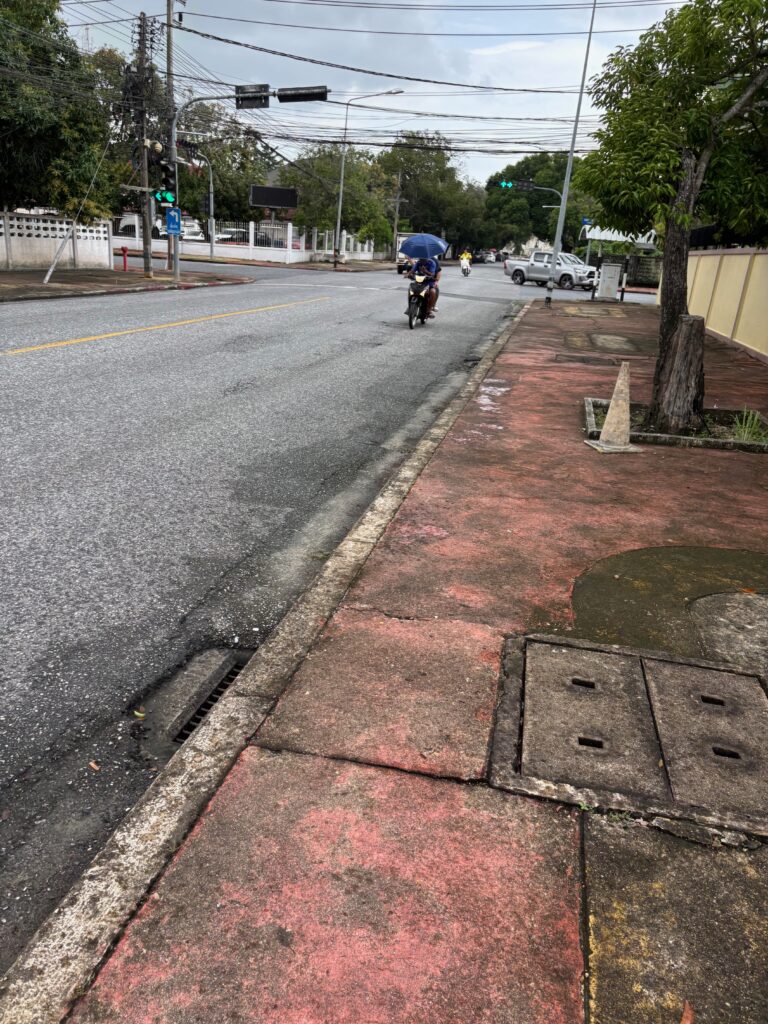
The main form of public transport is the Samlor,a three-wheeled motorcycle taxis with sidecars. However, no mapped route system makes navigation a bit unpredictable. Drivers generally understand Malay; most speak Thai, but none spoke English or Mandarin. Unlike in other places, I was largely ignored by drivers at the station, which was an unusual experience.
Other transport options include two-wheeled motorcycle taxis and the distinctly Thai songthaew—a pickup truck with two rows of seats in the back. Grab, the local ride-hailing service, operates in Yala and is the most convenient option.
Thanks to its wide pavements, I found Yala highly walkable. Locals seemed genuinely surprised to see me (a foreigner) walking, with many waving at me from motorcycles and cars, which added to the city’s unique experience. Street signs are clear and in multiple languages. Unlike in Bangkok, cars stopped at pedestrian crossings to let me cross.
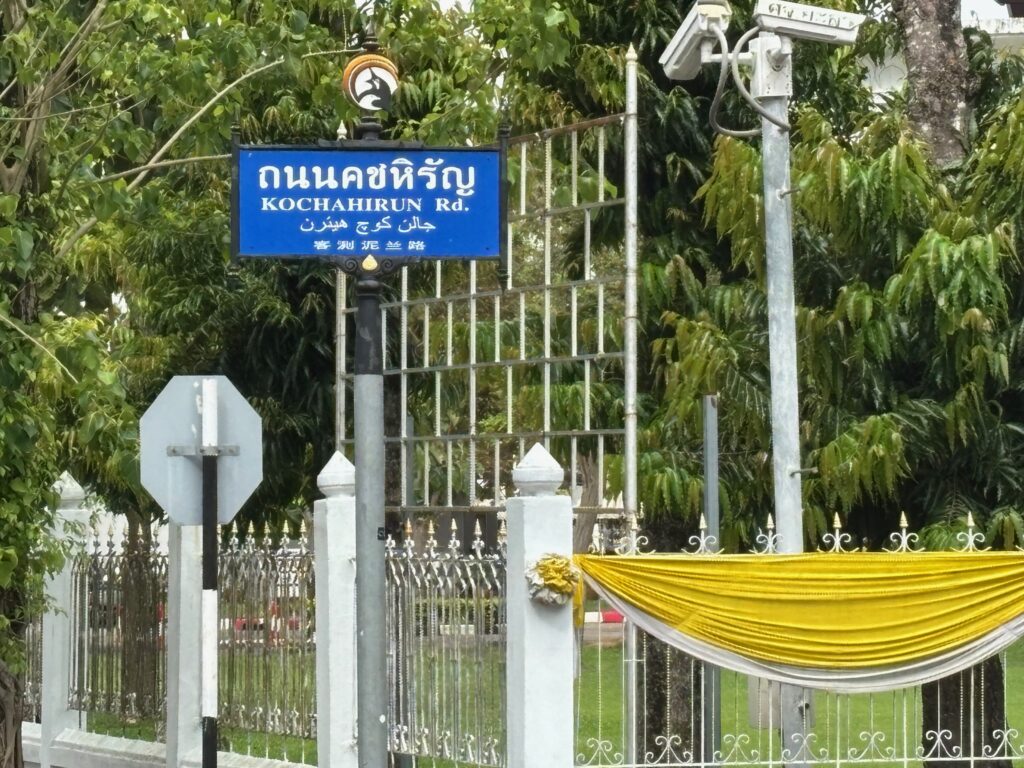
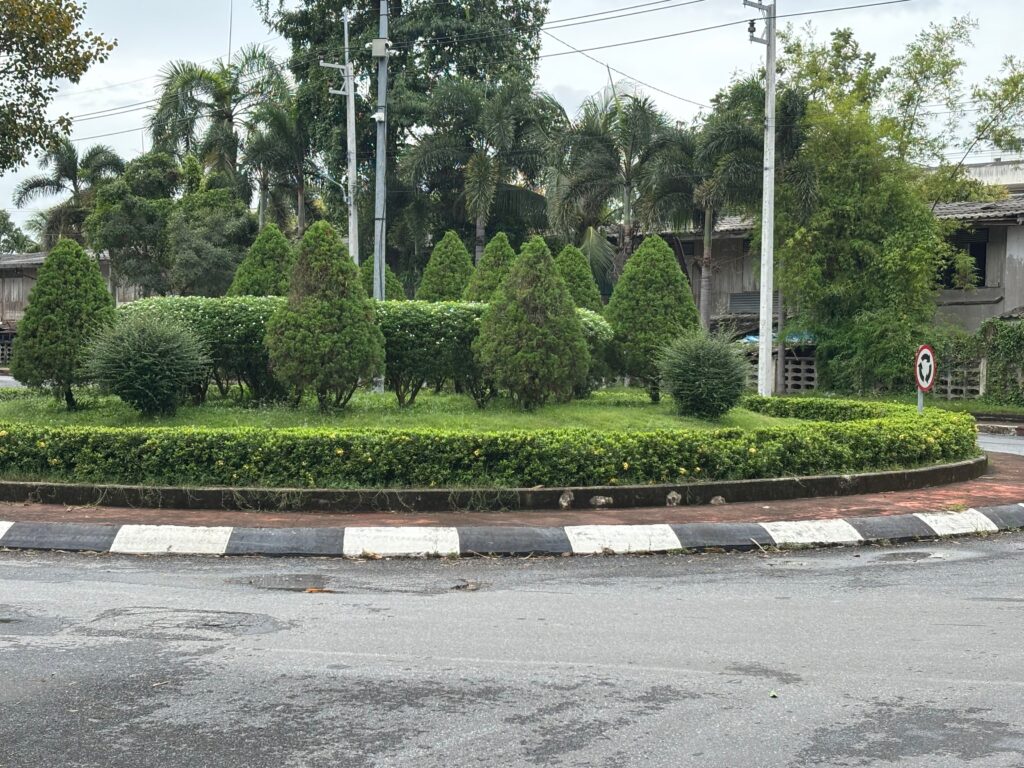
Culture
Yala is a fascinating mix of Malay, Thai, and Chinese influences. In Yala City, the demographic distribution has approximately 40% of the population being Malay Muslim Thais and 60% comprising Thai and Chinese-Thai Buddhists.
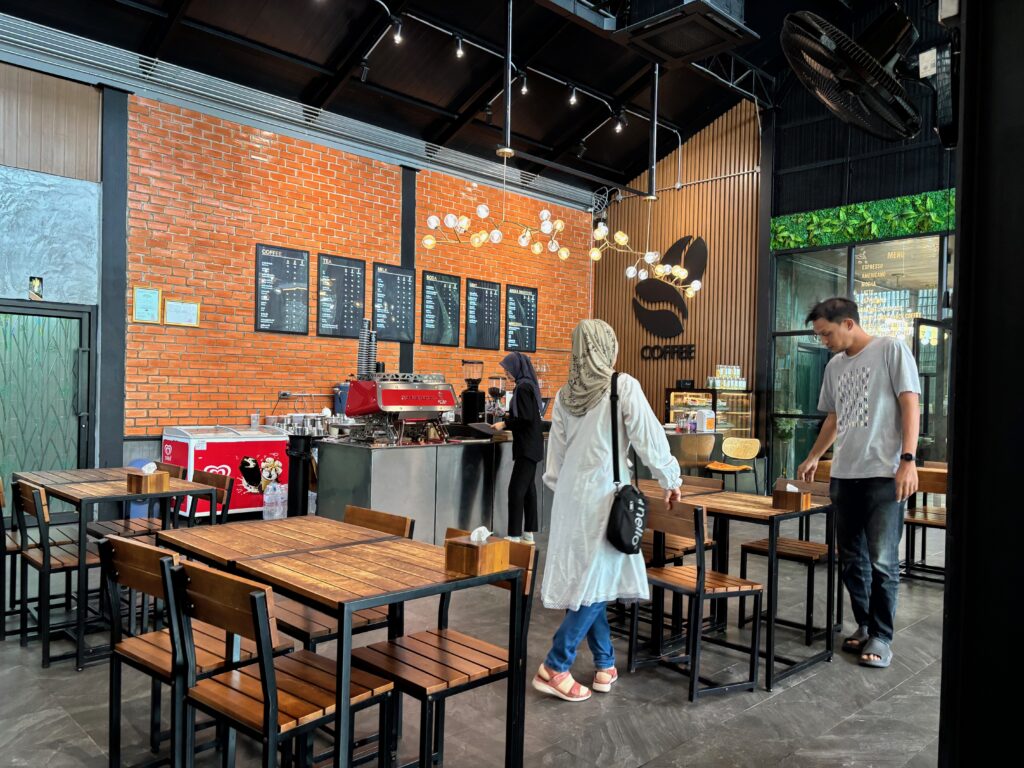
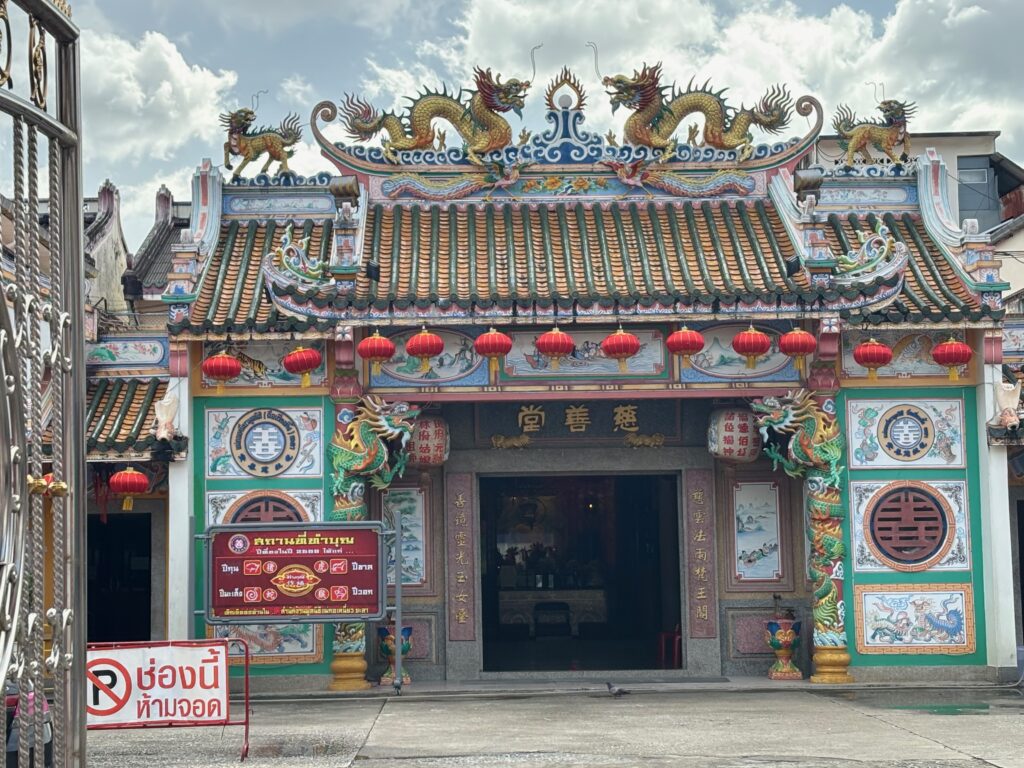
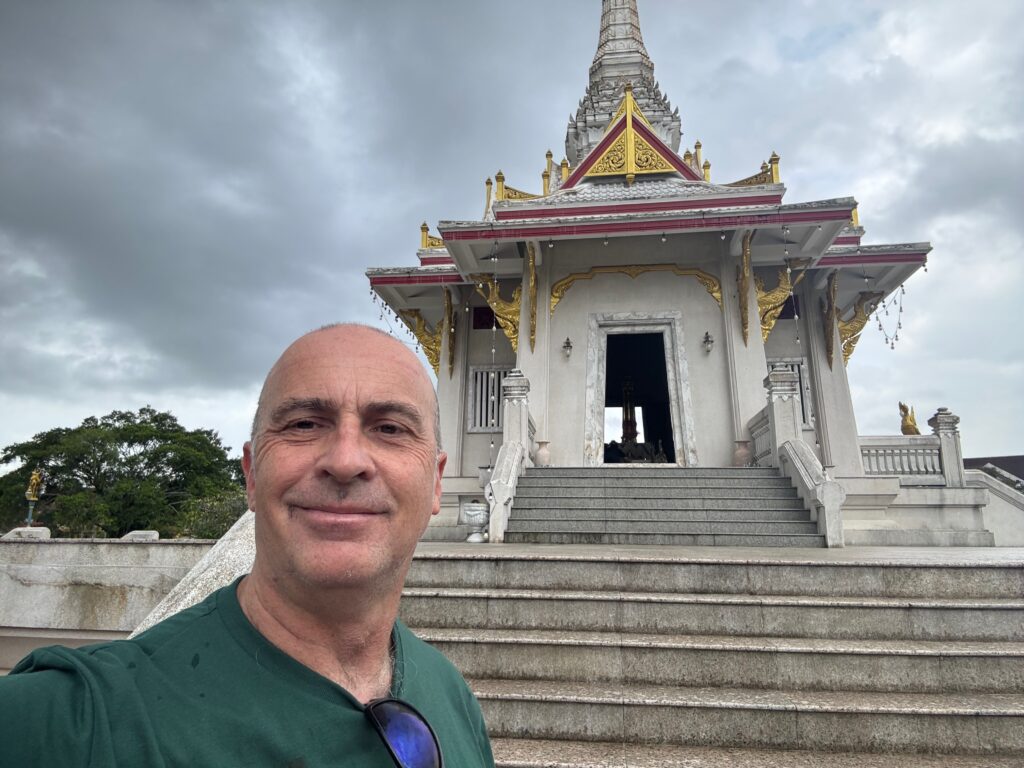
Food in Yala
Yala’s food scene is a mix of Thai, Malay, and Chinese influences, with a stronger Halal presence due to the Muslim-majority population. Yala is known for its strong coffee culture, with many local cafés. I tried a lot of coffee shops.—though I didn’t quite find a coffee blend I liked in the city.
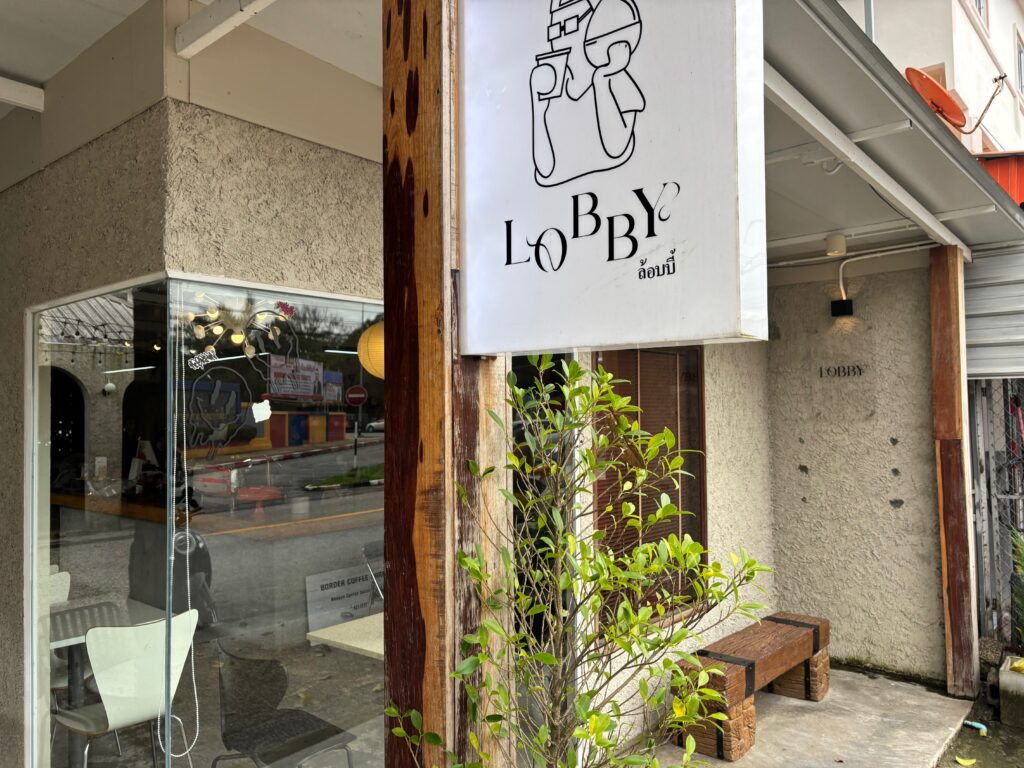
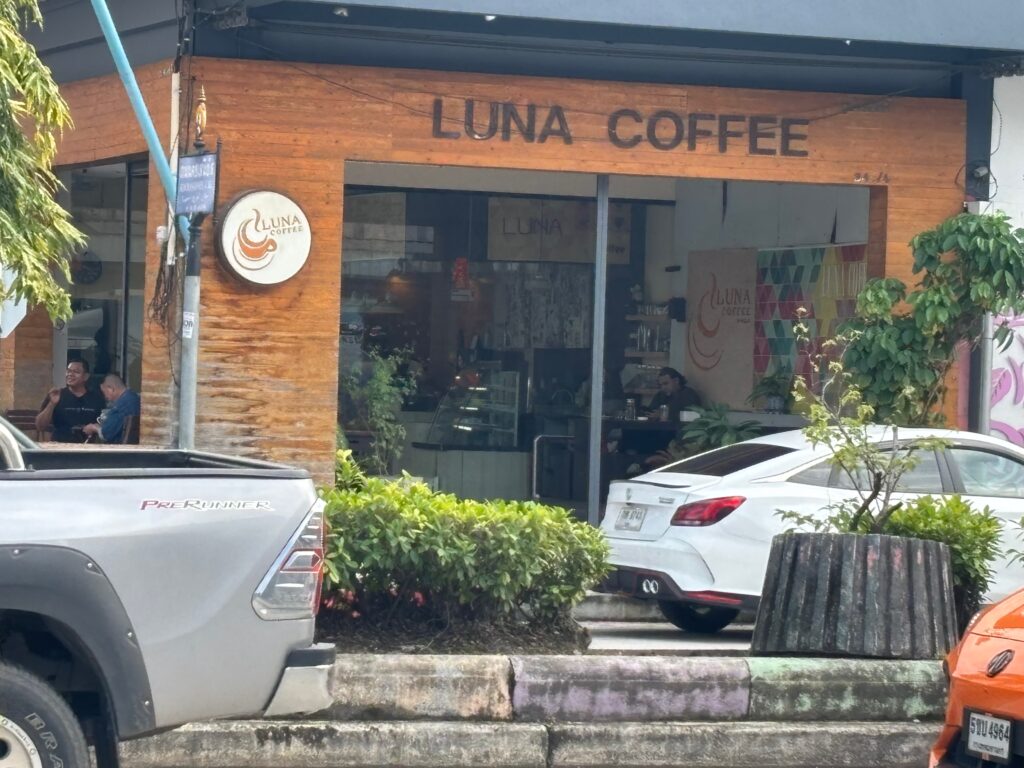
Right next to these cafes, I found a mix of options ranging from traditional stalls selling chicken rice, roti, or khao yam—(steamed rice mixed with sliced vegetables and drizzled with a fish sauce called Budu)—or a Western-style halal hamburger joint or Japanese restaurant. This contrast of old and new was a defining feature of Yala’s food scene. There were not many western chains.
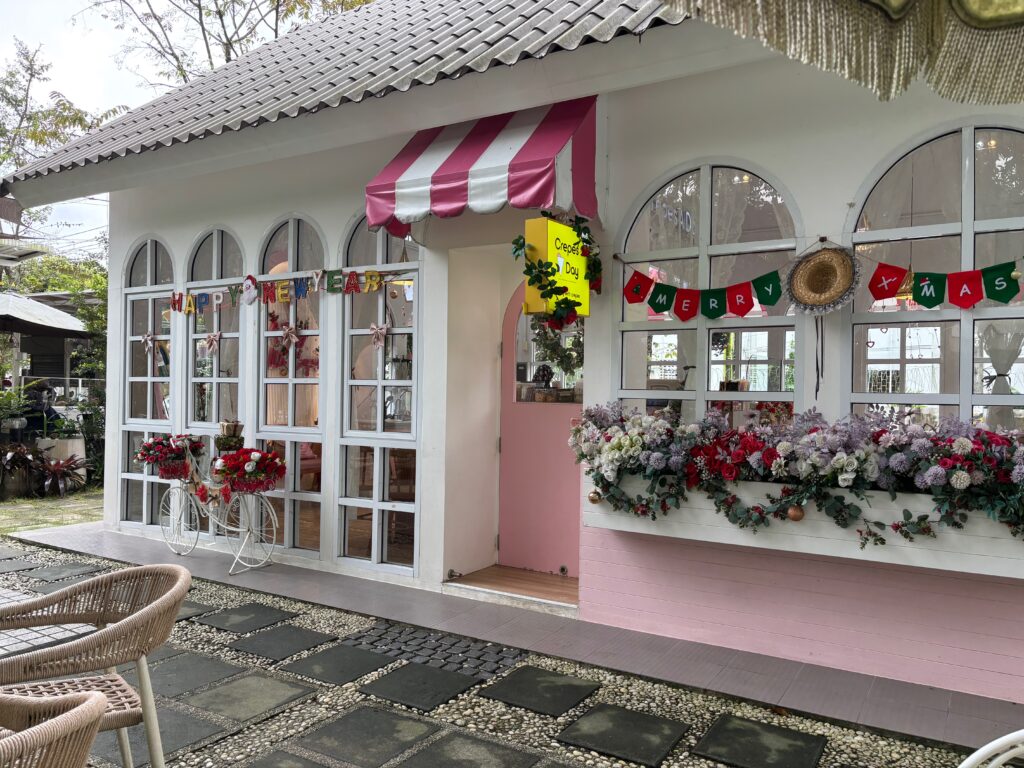
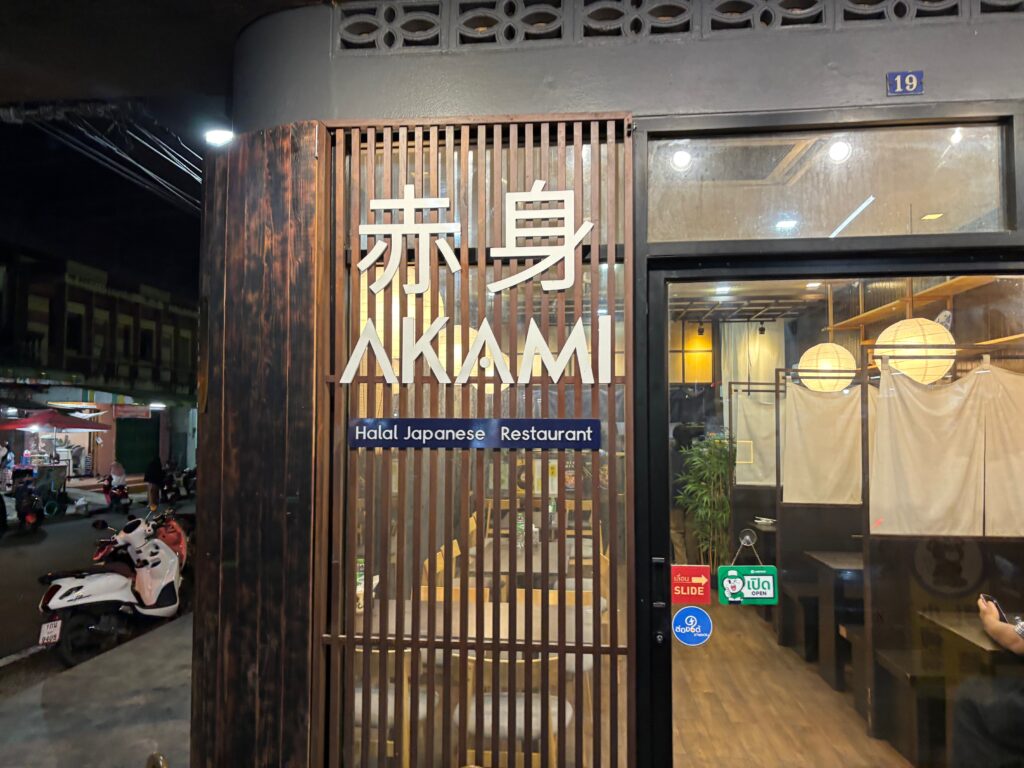
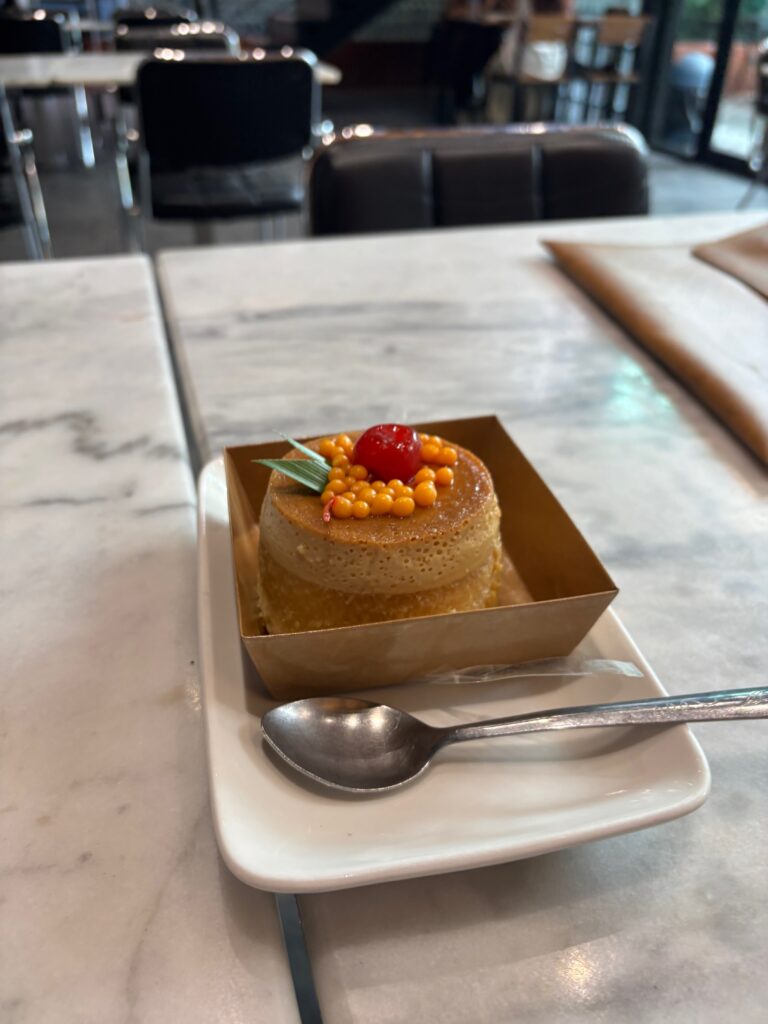
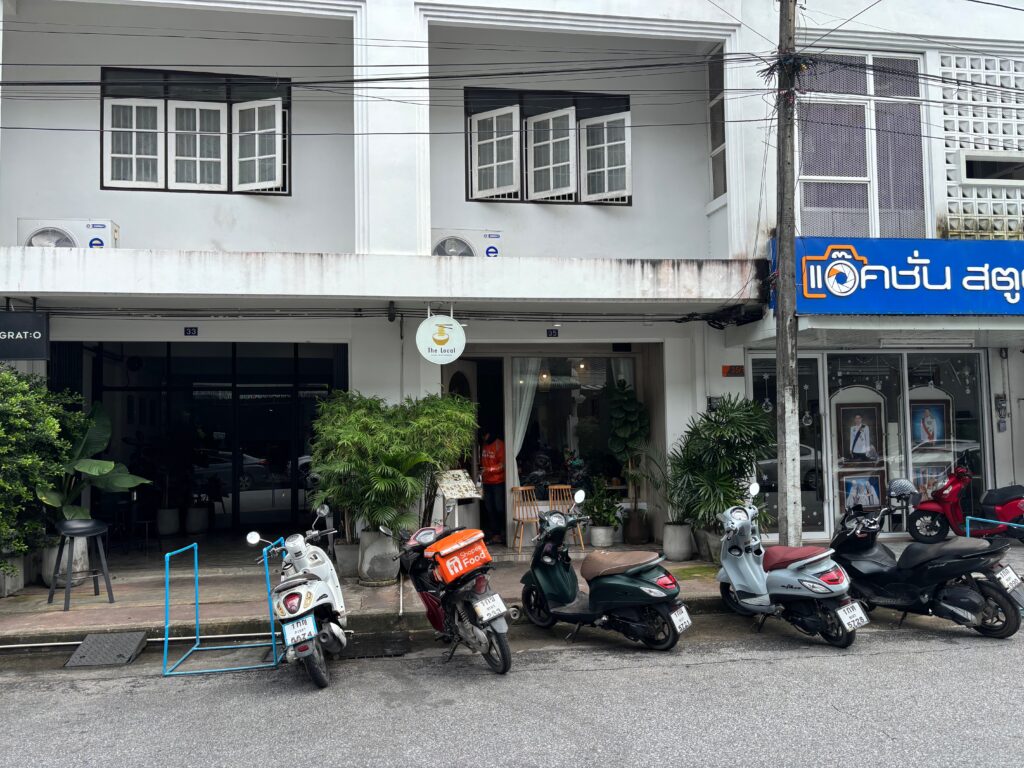
I found the food variety to be excellent for such a small city. Some must-try dishes include:
- Roti canai – A crispy, flaky Malay-style flatbread served with curry.
- Nasi Kerabu – A striking blue-coloured rice dish, common in Southern Thailand and Malaysia.- Yala people insisted theirs was the best versus the Kota Bahru Malasia residents who said gtehirs was the best
- Boat noodles – A Thai classic with a Deep South twist, served in spicy broth.
- Kebabs!
- Seafood
- Bakeries with sweet and savoury meals
Safety in Yala
Yala’s history of conflict means that security is tight, with military checkpoints forming a ring around the city centre. There were soldiers, armoured vehicles, and bag checks at major buildings. errorist attacks have declined significantly, but there are still incidents outside the city centre. Foreigners are rarely targeted, and daily life feels relatively normal.It’s wise to avoid unnecessary travel at night and stay updated on local news. I walked freely in the busy streets around my hotel day and night, although I was a little more watchful than I am in other Thai cities.
Top 12 Things to Do in Yala
- Yala’s Night Market was a great place to try local food and soak up the atmosphere.
- At the city’s Kilometre Zero is The Yala City Pillar Shrine a sacred site for Buddhists in the community. The shrine is pretty and is decorated with traditional Thai Buddhist symbols. It was well used. Surrounding the shrine is a nicely-maintained public park with decorative shrubs and trees. A running track encircles the area. If I can make a critique, I think not including Muslim and Christian symbols and spaces at the heart of the city is a lack. Their inclusion could help build bridges. City Hall is opposite the park in the inner circle.
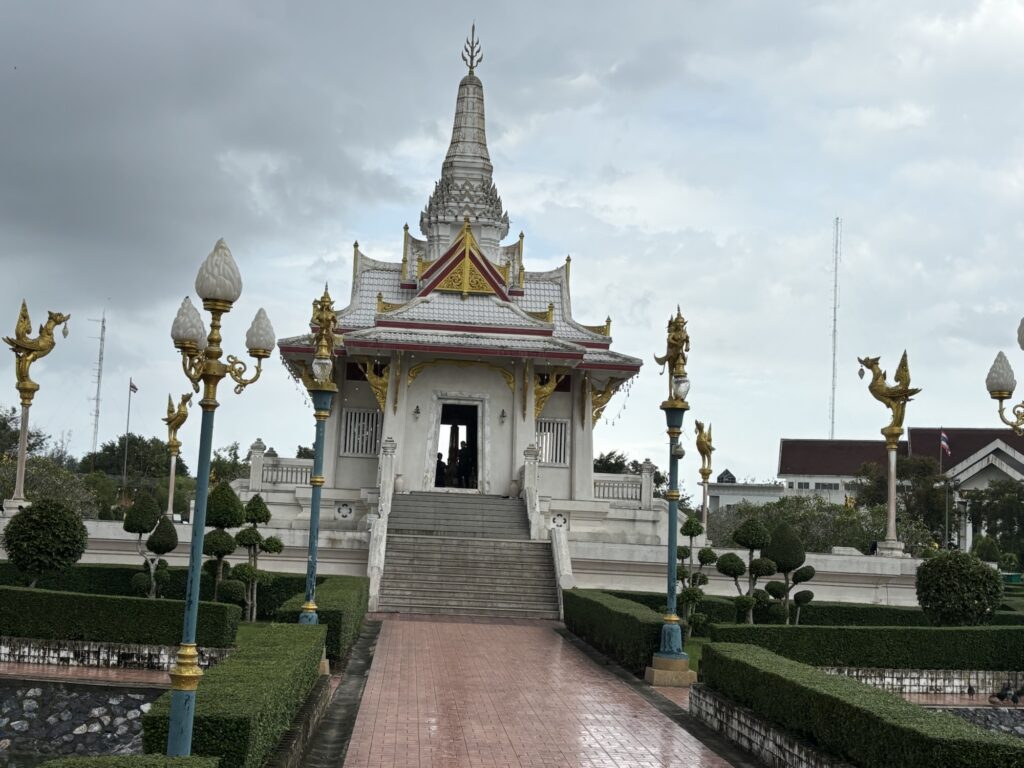
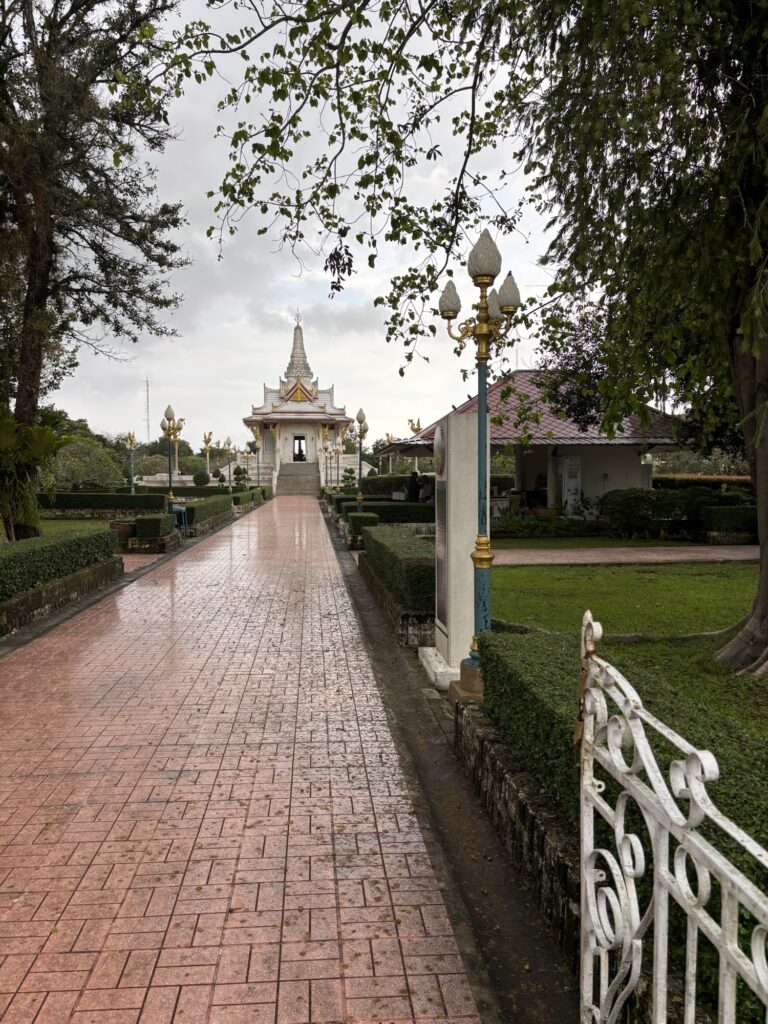
3. I really enjoyed walking through Suan Khwan Mueang Park, a beautifully designed 82 acres, approximately 300 metres east of the City Pillar Shrine in Yala City, Thailand. It is built around a large pond, with a sandy beach. Apparently, the park is renowned for hosting a singing bird contest.The park is ringed by some lovely restaurants and cafes
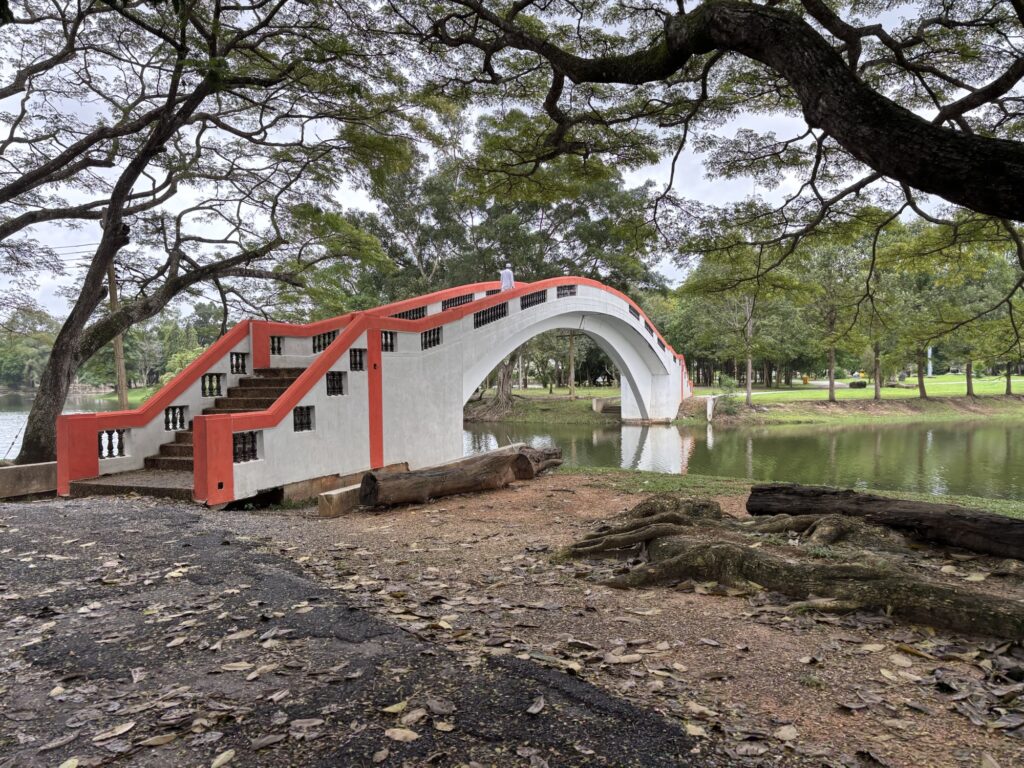
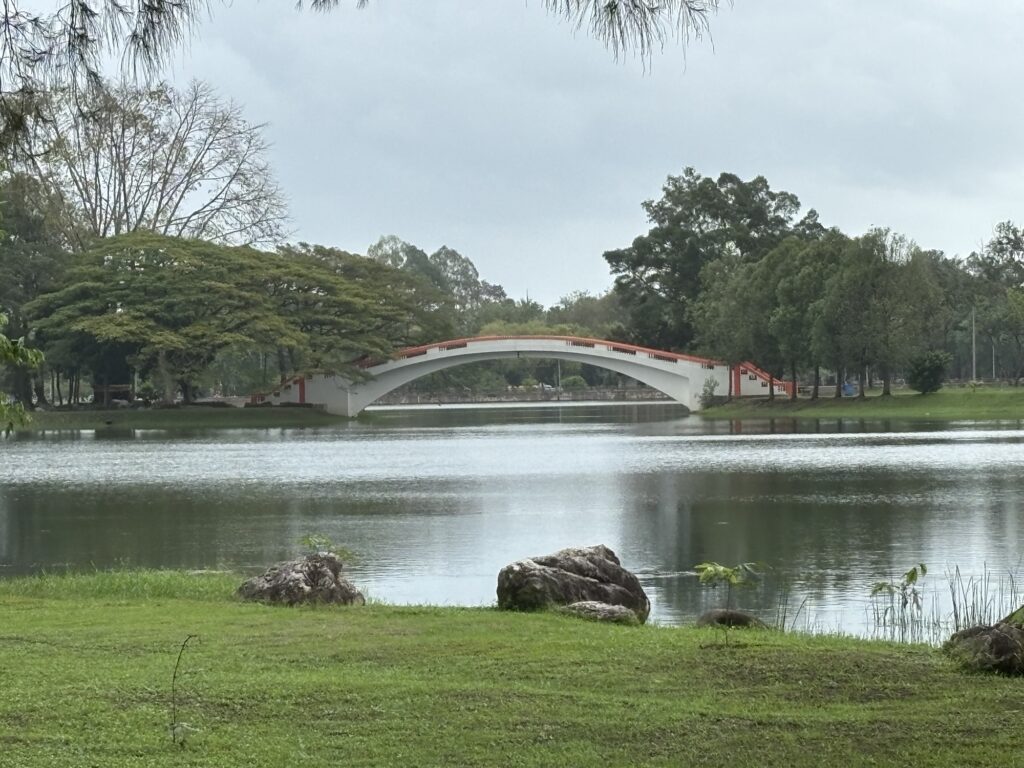
4. Likewise, Sanam Chang Phueak Park was a nice spot. It’s filled with statues of animals from around the world and dinosaurs, a nice lake, and lots of locals!
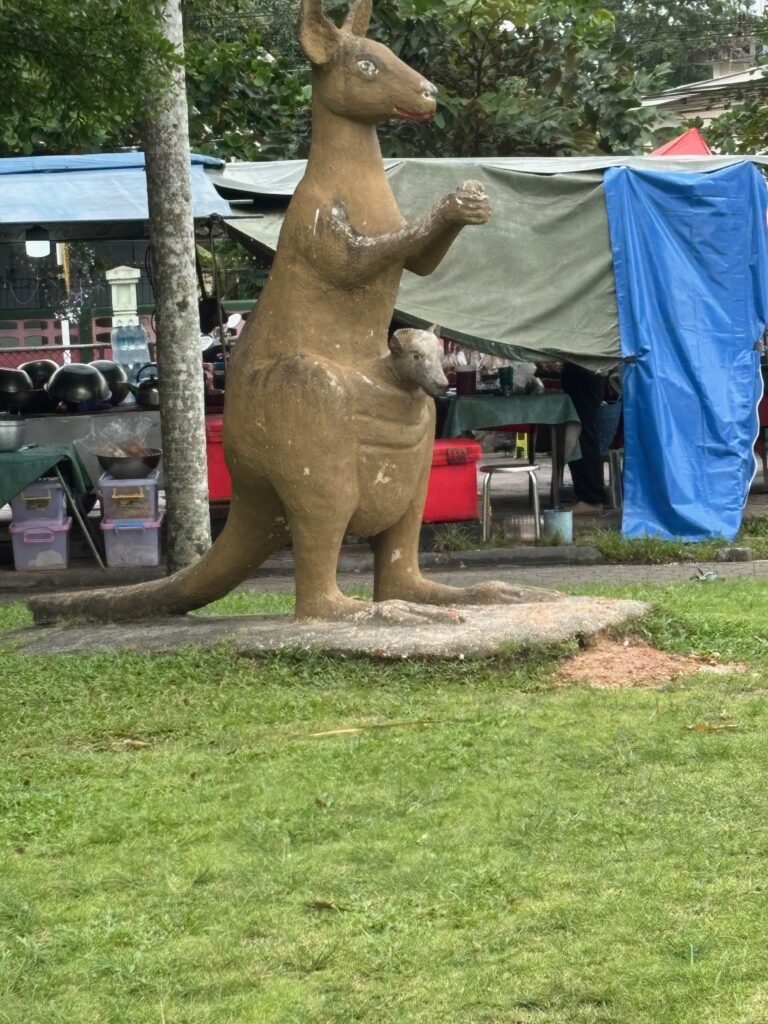
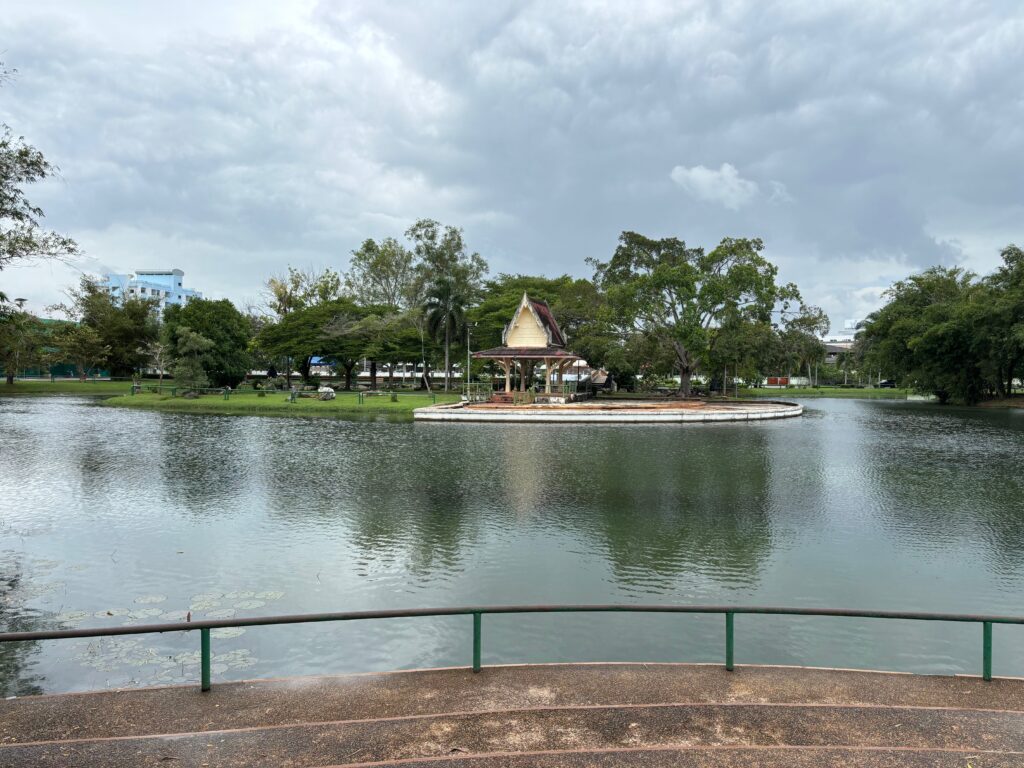
5. Yala Central Mosque – The city’s largest mosque, reflecting the region’s Islamic heritage.
6. Yala Bird City Street Art is A quirky highlight of Yala’s streets. In 2018, a group of young and emerging businesspeople invited renowned street artists to turn the walls in an old community on Nuansakul Road into their canvas. The graffiti was meant to add more colour to the old neighbourhood while giving outsiders a new perspective of Yala
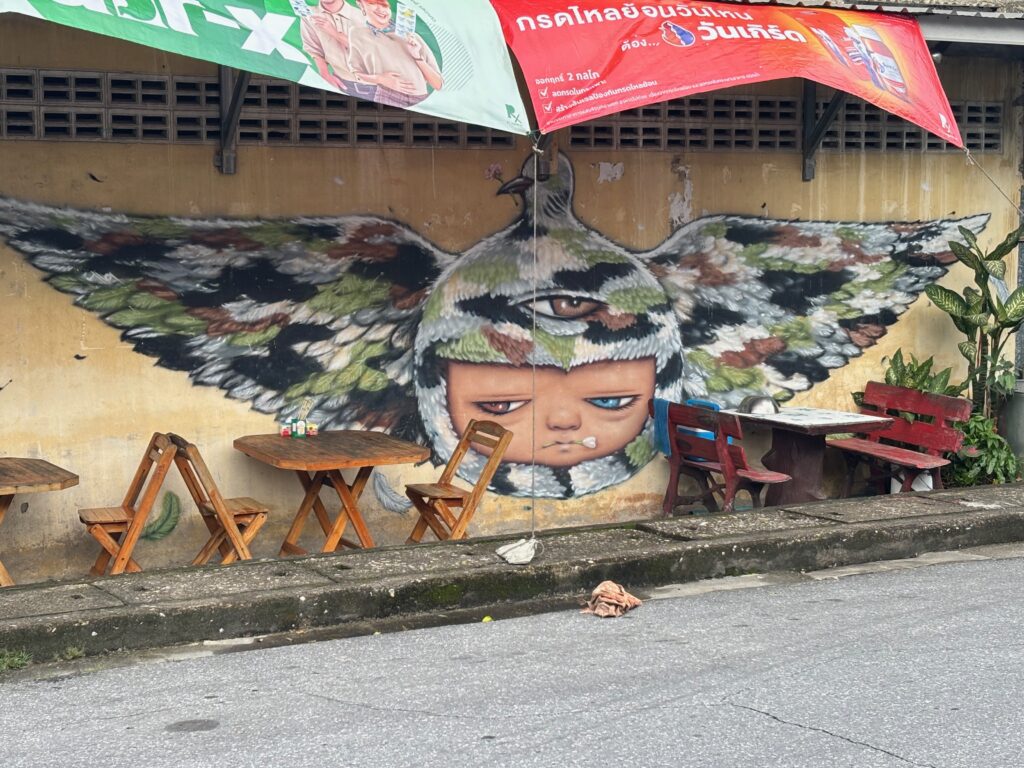
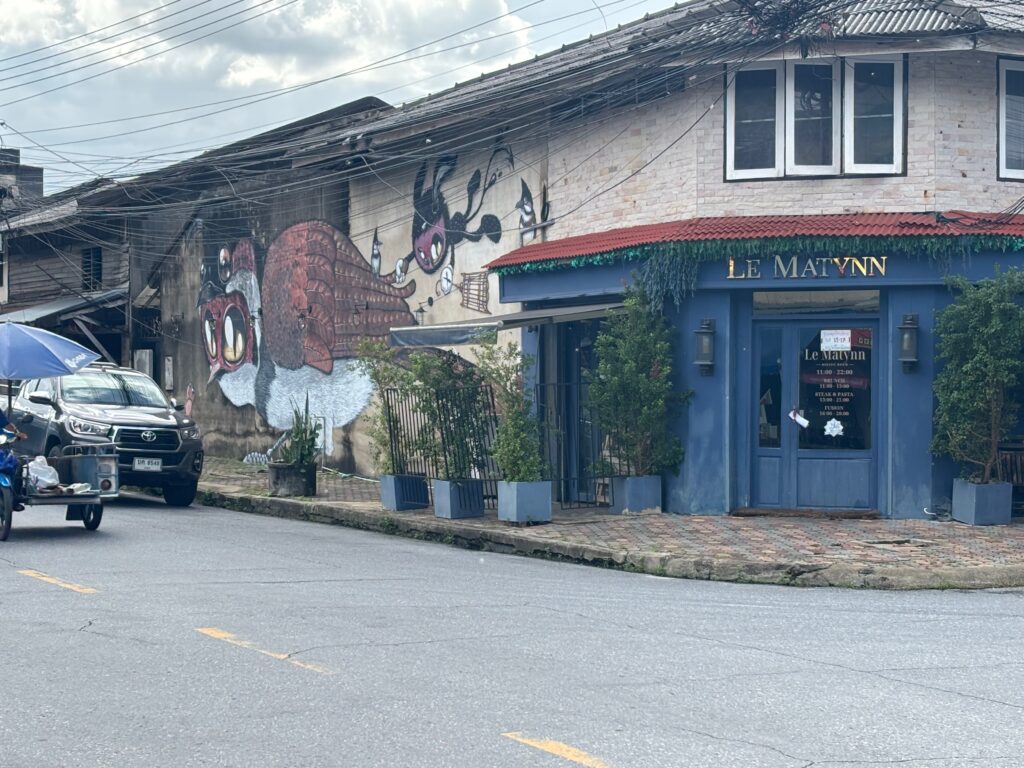
7. Just ten minutes drive from the city centre is Wat Khuhapimuk (Cave Temple) – a Buddhist temple in a limestone cave.
They are currently building a new City Museum, which will open in March. It looks very interesting as it aims to build bridges across communities.
Another option from Yala is to Take a Day Trip to Betong, Thailand’s southernmost town. Betong has hot springs and a historical World War II-era tunnel. More tourist visit here than Yala city! Also out of teh city is Hala-Bala, the most fertile forest in ASEAN, rich in exotic plants and wildlife, and many beautiful waterfalls.
Final Thoughts
Yala was truly unlike anywhere else in Thailand. It blends Malay, Thai, and Chinese cultures into a fascinating melting pot. Underpinned by its legacy as a planned city and shaped by both conflict and resilience, there is much to be concerned about, yet also much to be hopeful for. While caution was necessary, I felt it was safe to visit and offered a rare glimpse into a part of Thailand that few foreigners ever experience.
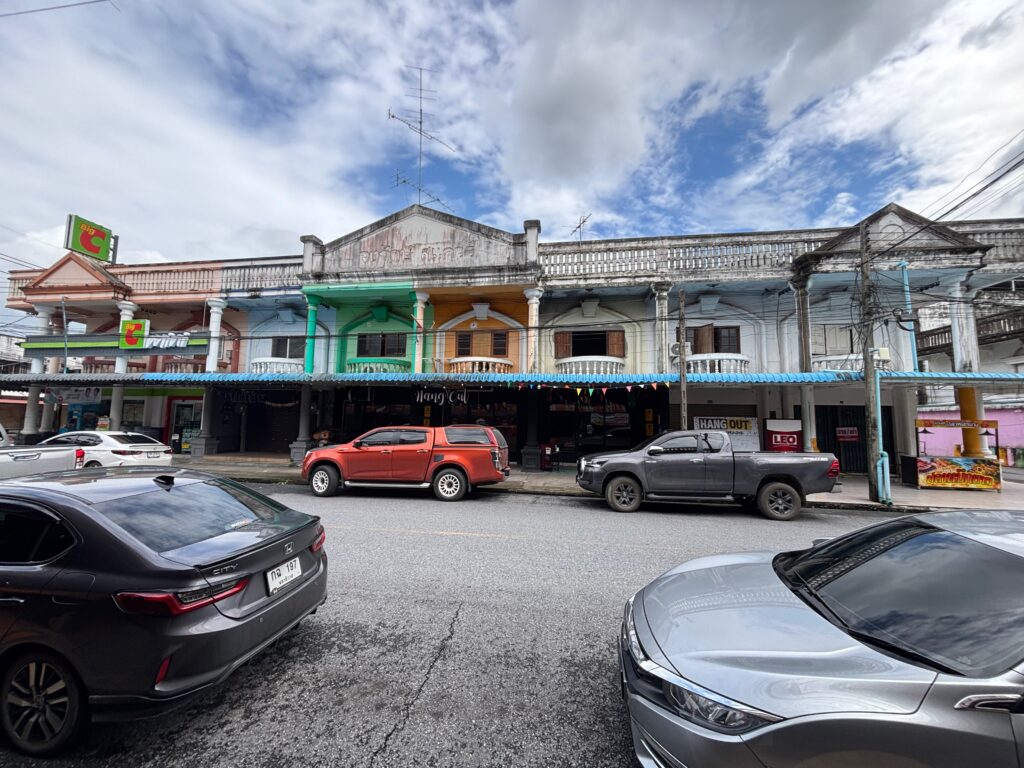

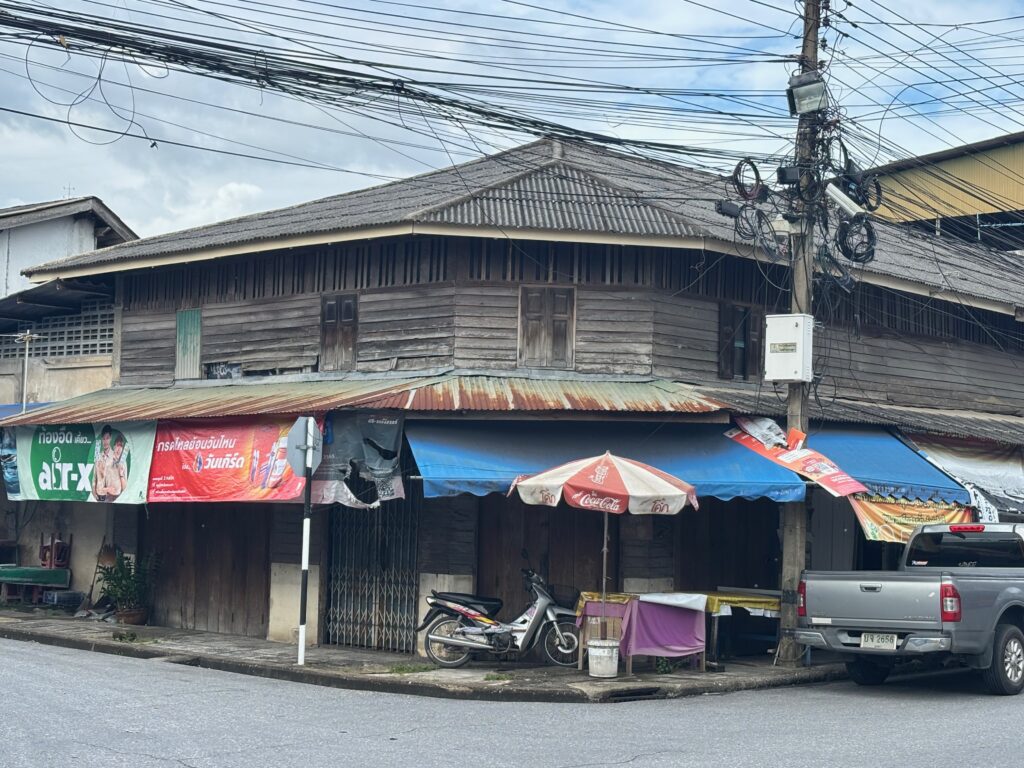
Related Posts
- Mind-blowing Experience on Thailand’s most Perilous Rail Route
- Crossing a Border Few Dare to Walk—What Happened Next
- Malaysia’s Jungle Railway: From the Heart of the Country to the Sea
- Get me out of here: Guatemala City: Where History and Gangs Collide
- Panama’s Special Bocas del Toro- another world
- Cali’s Magic: From Historic Streets to Salsa Beats

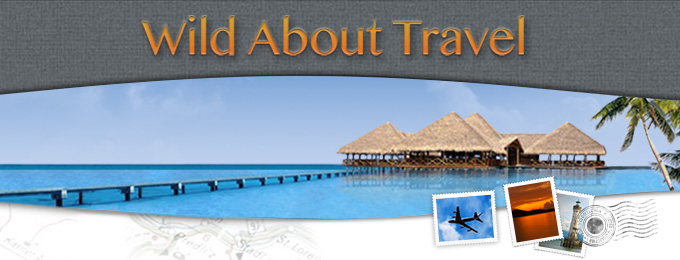
Leave a Reply